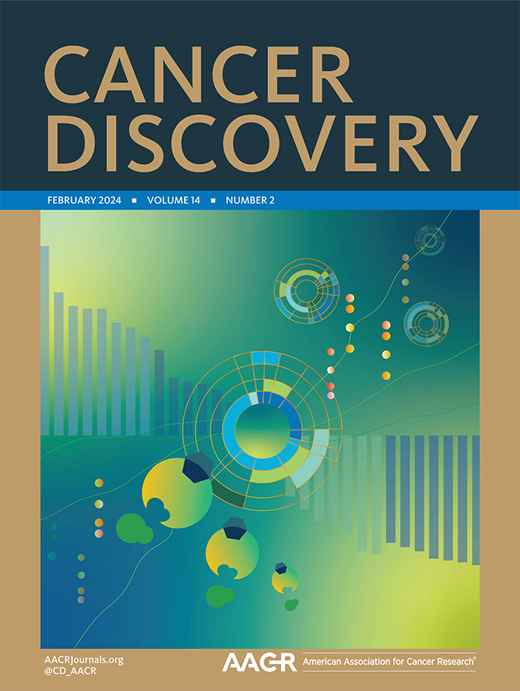AAnet resolves a continuum of spatially-localized cell states to unveil intratumoral heterogeneity.
IF 29.7
1区 医学
Q1 ONCOLOGY
引用次数: 0
Abstract
Identifying functionally important cell states and structure within heterogeneous tumors remains a significant biological and computational challenge. Current clustering or trajectory-based models are ill-equipped to address the notion that cancer cells reside along a phenotypic continuum. We present Archetypal Analysis network (AAnet), a neural network that learns archetypal states within a phenotypic continuum in single-cell data. Unlike traditional archetypal analysis, AAnet learns archetypes in simplex-shaped neural network latent space. Using pre-clinical models and clinical breast cancers, AAnet resolves distinct cell states and processes, including cell proliferation, hypoxia, metabolism and immune interactions. Primary tumor archetypes are recapitulated in matched liver, lung and lymph node metastases. Spatial transcriptomics reveal archetypal organization within the tumor, and, intra-archetypal mirroring between cancer and adjacent stromal cells. AAnet identifies GLUT3 within the hypoxic archetype that proves critical for tumor growth and metastasis. AAnet is a powerful tool, capturing complex, functional cell states from multimodal data.AAnet解析了连续的空间定位细胞状态,揭示了肿瘤内的异质性。
在异质性肿瘤中识别功能重要的细胞状态和结构仍然是一个重大的生物学和计算挑战。目前的聚类或基于轨迹的模型不足以解决癌细胞沿表型连续体存在的概念。我们提出了原型分析网络(AAnet),这是一种神经网络,可以在单细胞数据的表型连续体中学习原型状态。与传统的原型分析不同,AAnet在单纯形神经网络潜在空间中学习原型。利用临床前模型和临床乳腺癌,AAnet解决了不同的细胞状态和过程,包括细胞增殖、缺氧、代谢和免疫相互作用。原发肿瘤的原型在匹配的肝、肺和淋巴结转移中得到概括。空间转录组学揭示了肿瘤内的原型组织,以及癌症和邻近基质细胞之间的原型内镜像。AAnet在缺氧原型中发现了GLUT3,证明它对肿瘤生长和转移至关重要。AAnet是一个强大的工具,可以从多模态数据中捕获复杂的功能细胞状态。
本文章由计算机程序翻译,如有差异,请以英文原文为准。
求助全文
约1分钟内获得全文
求助全文
来源期刊

Cancer discovery
ONCOLOGY-
CiteScore
22.90
自引率
1.40%
发文量
838
审稿时长
6-12 weeks
期刊介绍:
Cancer Discovery publishes high-impact, peer-reviewed articles detailing significant advances in both research and clinical trials. Serving as a premier cancer information resource, the journal also features Review Articles, Perspectives, Commentaries, News stories, and Research Watch summaries to keep readers abreast of the latest findings in the field. Covering a wide range of topics, from laboratory research to clinical trials and epidemiologic studies, Cancer Discovery spans the entire spectrum of cancer research and medicine.
 求助内容:
求助内容: 应助结果提醒方式:
应助结果提醒方式:


